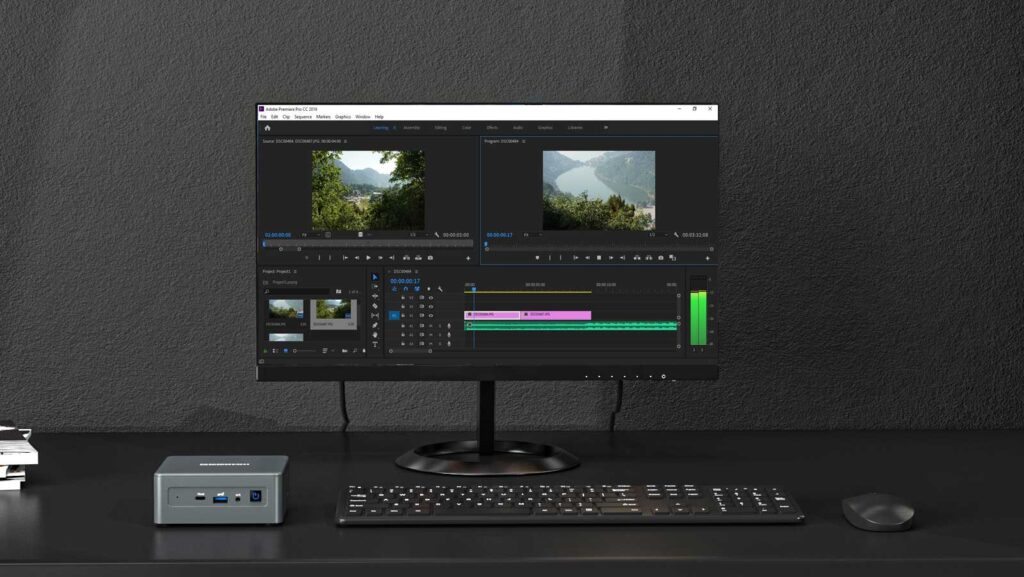In the ever-evolving landscape of computer processors, two titans dominate the high-performance segment: Intel’s Core i9 series and AMD’s Ryzen 9 lineup. Both represent the pinnacle of consumer-grade CPUs offered by their respective companies and cater primarily to enthusiasts, gamers, content creators, and professionals demanding substantial computing power. Choosing between an Intel i9 and an AMD Ryzen 9 can be a daunting task, given the rapid development cycles, nuanced architectural differences, and varied use cases. This comprehensive analysis aims to dissect their key features, performance metrics, pricing, and overall value proposition to help you decide which processor aligns best with your computing needs.
Understanding the Contenders: Intel i9 and AMD Ryzen 9
Before delving into the comparisons, it’s essential to understand the core characteristics of each series.
- Intel Core i9: Intel’s flagship consumer processors, primarily based on the latest iterations of its Core architecture (such as Alder Lake, Raptor Lake), Intel Core i9 chips combine high core counts with cutting-edge hybrid architecture—mixing performance (P) cores and efficiency (E) cores. These CPUs typically excel in single-threaded performance and boast advanced features like integrated graphics and extensive platform support.
- AMD Ryzen 9: AMD’s Ryzen 9 processors are built on the Zen architecture, with the latest generation being Zen 4 based on a 5nm process. Ryzen 9 CPUs emphasize higher core and thread counts, multi-threading capabilities, and robust power efficiency. AMD Ryzen chips generally offer competitive multi-core performance, making them a favorite among content creators and professionals using multi-threaded workloads.
Key Specifications Comparison
| Specification | Intel Core i9-13900K (Raptor Lake) | AMD Ryzen 9 7950X (Zen 4) |
|---|---|---|
| Cores / Threads | 24 (8 P-cores + 16 E-cores) / 32 | 16 cores / 32 threads |
| Base Clock Speed | P-cores: 3.0 GHz; E-cores: 2.2 GHz | 4.5 GHz |
| Max Turbo Frequency | Up to 5.8 GHz (P-cores) | Up to 5.7 GHz |
| Cache | 36 MB L3 | 64 MB L3 |
| TDP | 125W (Base), up to 253W (Turbo) | 170W |
| Integrated Graphics | Intel UHD Graphics 770 | None (separate GPU needed) |
| PCIe Support | PCIe 5.0 | PCIe 5.0 |
| Memory Support | DDR5-5600, DDR4-3200 | DDR5-6000 |
Performance Analysis
1. Single-Core and Gaming
Intel’s Core i9 processors have traditionally held an edge in single-threaded performance. Thanks to Intel’s hybrid core design and mature high-frequency tuning, the i9-13900K exemplifies this with its ability to boost individual cores to nearly 5.8 GHz. This contributes to superior gaming performance, especially in titles dependent on high clock speeds and minimal thread divergence.
AMD Ryzen 9 chips have closed the gap significantly, with a base clock of 4.5 GHz and boost frequencies nearing Intel’s offerings. However, due to Intel’s hybrid architecture, the i9 typically achieves slightly better frame rates in gaming benchmarks, particularly at 1080p resolutions where CPU bottlenecks are more evident.
2. Multi-Core and Productivity
When it comes to multi-threaded workloads—video rendering, 3D modeling, scientific simulations, or software compiling—both CPUs excel, but with subtle differences. AMD Ryzen 9 processors leverage higher core counts and massive L3 cache, enabling efficient parallel processing. The Ryzen 9 7950X’s 16 cores and 32 threads provide exceptional throughput and sustained performance.
Intel’s hybrid approach with fewer performance cores but numerous efficiency cores allows for a highly flexible distribution of loads. While Ryzen’s raw core count is higher, Intel’s combination of 24 cores (including 16 E-cores) still yields excellent multi-threaded performance, with benchmarks often showing a close contest or slight Intel advantage in mixed workloads.
3. Power Efficiency and Thermal Management
AMD’s Ryzen 9 7950X is fabricated on TSMC’s 5nm node, contributing to improved power efficiency relative to Intel’s Intel 7 process (which is effectively a refined 10nm). Despite a higher TDP rating (170W vs. Intel’s 125W base), Ryzen CPUs generally maintain competitive power consumption under load, though actual power draw depends heavily on workload and motherboard tuning.
Intel’s hybrid architecture allows for fine-grained power management—shifting workloads dynamically between P and E cores—helping reduce power usage in lighter tasks. However, under heavy loads, the i9 can consume more power and generate more heat, necessitating robust cooling solutions.
Platform and Ecosystem Considerations
Choosing between Intel i9 and Ryzen 9 also involves understanding the platform implications:
- Motherboard Compatibility: Intel’s 13th Gen i9 processors require LGA 1700 socket motherboards with 600 or 700 series chipsets. AMD Ryzen 9 7000 series utilize the new AM5 socket, introducing an all-PCIe 5.0 and DDR5 memory standard. AM5 is a long-term platform expected to support several future generations, which may appeal to upgrade-minded users.
- Memory Support: While both platforms support DDR5, Ryzen 9 systems typically support higher-end DDR5 speeds out of the box, benefiting memory-sensitive applications. Intel’s CPUs still offer DDR4 compatibility on select chipsets, providing a cost-effective option for users not yet ready to transition to DDR5.
- Integrated Graphics: Most Intel i9 processors come with integrated UHD graphics, useful for troubleshooting or systems without dedicated GPUs. AMD’s Ryzen 9 chips generally do not include integrated graphics, though AMD’s recent “G” series APUs do, which are less performance-focused.
- PCIe Connectivity: Both Intel and AMD platforms now offer PCIe 5.0 support, future-proofing high-speed storage and GPU options. However, actual PCIe 5.0 device availability is still limited in the market.
Pricing and Value Proposition
Pricing fluctuates based on promotions and retailer offerings, but generally:
- Intel Core i9-13900K: Around $550-600 USD.
- AMD Ryzen 9 7950X: Around $580-650 USD.
When factoring in platform costs—motherboards and DDR5 RAM—pricing differences may even out or lean slightly depending on preferences. Intel’s support for DDR4 on certain boards can reduce the overall upgrade cost, whereas AMD’s AM5 adoption mandates DDR5 and newer boards.
Value-wise, AMD often positions its Ryzen 9 offerings with more cores for similarly priced chips, appealing to multi-threaded workloads. Intel’s strength lies in superior gaming and diverse workload adaptability.
Which One Should You Choose?
Consider Intel Core i9 if:
- You prioritize absolute top-tier gaming performance.
- You want integrated graphics for backup or light display use.
- You prefer the flexibility of DDR4 memory support to keep upgrade costs lower.
- You seek a platform with hybrid architecture suitable for both light and heavy multitasking.
Consider AMD Ryzen 9 if:
- You require maximum multi-threaded throughput for content creation or professional workloads.
- You want a long-term platform investment with AM5 socket compatibility.
- You prefer slightly better power efficiency under sustained loads.
- You are ready to embrace DDR5 memory and the latest platform standards.
Conclusion
Both Intel’s Core i9 and AMD’s Ryzen 9 processors represent engineering marvels, delivering extraordinary performance for demanding users. Your ultimate decision will hinge on the specific applications you run, your budget, and your future upgrade plans. Intel’s i9 offers exceptional gaming and versatile performance, while AMD’s Ryzen 9 excels in multi-threaded productivity and platform longevity.
In this competitive era, no matter which CPU you choose, investing in either a high-end Intel or AMD processor ensures you’ll be well-equipped to handle today’s and tomorrow’s computing challenges with remarkable efficiency.
Author Bio:
Jane Doe is a technology analyst and hardware enthusiast with over a decade of experience covering CPUs, GPUs, and computer architecture. She specializes in helping readers make informed decisions through detailed technical reviews and comparative analyses.

